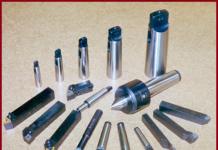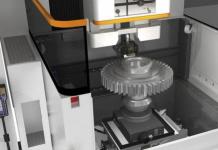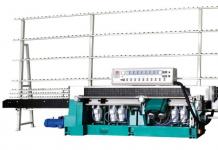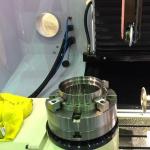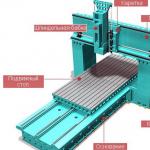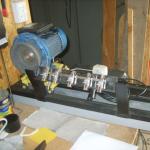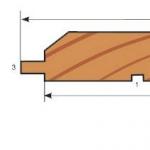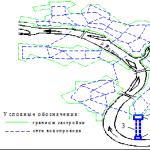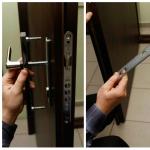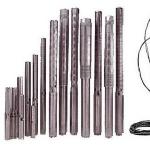Content
Affordable price compared to other types of energy carriers, no problems with the purchase, good heat transfer are the main reasons why many users prefer to use coal briquettes for heating. The price of more familiar energy carriers is constantly increasing, which forces us to look for alternative sources of heat. Coal dust is an affordable type of fuel, but its use in its pure form is unprofitable: half of the raw material falls into the ash through the bars of the grate, and the other half is sintered, which leads to clogging of the firebox.
coal briquettes
One of the options for using coal dust, which allows you to get the maximum heat out of it, is to pour the fraction on firewood, with which the boiler is pre-heated. But this is very troublesome, since it often needs to be poured in small portions. An embankment of a large amount of fine fraction will lead to the fact that it will still spill into the ash pan, turning into waste. And the part that still remains on the wood will fill the gaps between them, blocking the air circulation and provoking the attenuation of the firebox.
The way out is the production of briquettes from dust with the addition of excipients by pressing. The fine fraction processed in this way burns perfectly with high heat transfer.
More about briquetting technology
At the beginning of the last century, the Russian researcher A.P. Veshnyakov suggested pressing the fine fraction into elements of a certain shape and size, which, in terms of heat transfer, were not inferior to coal itself. The idea has found wide application both in everyday life and in industry.
 Briquettes of coal on a screening belt
Briquettes of coal on a screening belt Today, pressed coal is classified depending on the material, environmental friendliness, security, shape and type of packaging. But the two main types are:
- For production with the addition of binding components.
- For home use without additives.
It is important to know that production briquettes should not be used in everyday life. When they are burned, a large amount of toxic substances are released, for the removal of which, under production conditions, special equipment is responsible. Previously, in the manufacture of household briquettes, additives in the form of molasses or starch were used. But this technology is a thing of the past.
industrial production
Distinctive features of dust and fine coal fraction: low specific calorific value and density. But these materials are considered as cheap raw materials that allow organizing the production of coal briquettes. The products will have good density and heat dissipation at a low cost.
For the manufacture of briquettes in the factory, a special technological line is used, consisting of a crusher, dryer, press. The movement of semi-finished products between machines is provided by a belt conveyor.
Pressed coal without additives is produced in several stages:
- Grinding of raw materials to a particle size of 6 mm and smaller.
- Drying the mixture to 15% moisture using steam and gas dryers.
- Further, the dust is cooled and fed to a stamp-type press, which acts on the mixture under a pressure of 20-150 MPa (depending on which technology is used). After this processing, the finished briquettes are delivered to the finished product warehouse for storage.
The purpose of the fuel and the equipment used are the main factors affecting the size of the particles, the level of humidity and the amount of pressure under which they turn into briquettes. At the same time, the energy intensity of the finished product directly depends on the quality of raw materials. It is important to use exactly the fine fraction of anthracite, and not brown or other types of coal. For strength, the addition of mineral or organic additives is acceptable.
 Coal briquetting press
Coal briquetting press Coal briquettes can be pressed in two ways depending on what equipment for briquetting is used:
- stamp press. The heated coal mixture is filled with special molds, in which it is compressed with a force of 100-120 MPa. After cooling, the briquettes are packaged. The finished product looks like bricks or cylinders with holes, it can look like "pills" or "pillows". This manufacturing method is suitable for the production of briquettes in large quantities due to high energy and financial costs.
- extrusion machine. In this case, the plastic coal mass is pressed through the matrix by a press. Briquette screw pressing (pini-kei) of coal dust has a cylindrical shape, resembling a "sausage", with a calibrated hole in the middle. The technology is less expensive, but also less productive.
The technology for the production of briquettes for industrial use involves the addition of cement, oil-bitumen mixture, liquid glass and others. In metallurgy, the use of these substances is permitted. But it is impossible to buy coal briquettes with oil bitumen for heating a dwelling according to the requirements of the SES.
Briquetting coal at home
For briquetting coal at home, industrial technology is not suitable. The high price of equipment for the production of coal briquettes, high energy costs, the need to obtain a huge number of permits from government agencies significantly increases the cost of finished products. But for the purpose of heating a small private house, there is no need to organize large-scale production. For the manufacture of 3-4 tons of briquettes (winter stock), it is quite possible to get by with improvised means.
 Equipment for briquetting at home
Equipment for briquetting at home The easiest way, which was well known to our great-grandfathers:
- Coal dust is mixed with clay in a ratio of 10:1 with the addition of a small amount of water to form a thick mass. Clay is a safe binder that will prevent the briquettes from falling apart. It is important to thoroughly mix all the components of the mixture. For this purpose, a construction mixer is often used.
- Next, the solution is poured into molds. It can be both special containers and used inventory (old pots, buckets, boxes). If there are no containers, charcoal cakes can also be formed manually, as our ancestors did.
- After complete drying, briquetted coal can be sent for storage.
Despite the fact that, according to the production technology, the mixture is dried, during home briquette preparation, the mixture is moistened. In this case, do-it-yourself coal briquettes have the following distinctive features:
- Imperfect form.
- Different levels of humidity and, consequently, heat transfer.
- Low strength, which does not allow transporting briquettes.
 Homemade coal briquette
Homemade coal briquette But these properties do not prevent low-cost products from burning well, especially compared to sintered dust. This option is much more convenient and practical.
And if you still want to somehow automate the process, then you can follow the example of home craftsmen and independently manufacture equipment similar to production:
- Machine that allows you to make briquettes by hand. Instructions on how to make a machine are easy to find on the Internet. For manual pressing, a unit designed for home brick production is well suited. The materials that allow welding the frame are a profile pipe and a corner of 40 * 40 mm. A receiving hopper is mounted on top. A manual mechanism for briquetting the mixture into rectangular or cylindrical products is attached to the side. Technology:
- Raw materials are crushed to the maximum. The fine fraction ensures the strength and quality of the briquette.
- Adding water will make the mixture sticky to your hands. It is permissible to add clay in a small amount in order to slightly increase the ash content of the fuel.
- Next, the mixture is poured into the bunker, from where the mold is filled. The briquette is squeezed out by pressing the lever.
- The reverse movement of the lever causes the briquette to be pushed out of the mold. It is removed and placed in the sun to dry.
- Screw press where products are briquetted by extrusion. In this case, the financial costs of assembling the machine, as well as its productivity, will be greater. You will need:
- Thick-walled steel pipe for the manufacture of the body. Inside, it is machined according to the desired screw size.
- Auger made of high strength carbon steel.
- Matrix with one or more holes of the same material.
- Electric motor with a power of 4 kW.
- Belt drive (minimum 3 belts).
- Receiving bunker.
 Technology for the production of coal briquettes without a binder
Technology for the production of coal briquettes without a binder It is better to entrust the manufacture of the body, matrix, screw to a good turner. It is important that the diameters of the pulleys provide a screw speed of no more than 200 rpm. The motor must be grounded before connecting it to the household power supply.
Production technology:
- The raw material is crushed and mixed with water.
- When the engine is on, the mixture is loaded into the bunker.
- Appearing "sausages" are cut into pieces of the desired length and laid out on a rack to dry.
It is important to know that the presence of through holes in the finished briquettes contributes to better combustion and greater heat transfer.
conclusions
If you believe the manufacturers of coal briquettes, then the calorific value of this type of solid fuel is even greater than that of other varieties. Theoretically, this statement can be quite realistic due to the fact that only when burning 1 kg of anthracite, you can get 7.7-8 kW. In terms of specific heat, firewood and wood briquettes lag far behind, releasing only 5 kW/kg.
However, an analysis of the feedback from the owners of solid fuel boilers on thematic forums shows that the demand for coal dust briquettes is lower than for wood, for several reasons:
- With their help, it is difficult to melt the boiler and when burned, coal gives off little heat.
- Before and during combustion, an unpleasant odor remains in the room.
- Briquettes lose their shape, crumble heavily during transportation.
- Lots of ash.
 Combustion of coal fuel in briquettes
Combustion of coal fuel in briquettes A large number of negative reviews (about 70% of the total) can be explained by the fact that manufacturers use low-quality raw materials in order to get more profit. They briquette mixture, sludge and other types of coal unsuitable for space heating, and add excess substances for the mass. Briquettes made really from anthracite are hard to find. The main feature is the rich black color of the products.
Conclusions are clear:
- It is better to make coal briquettes on your own.
- For production, it is necessary to buy high-quality raw materials.
- If it is possible to purchase only low-calorie grades of coal, pressing is not economically feasible. Although burning low-quality briquettes along with firewood will reduce heating costs.
Yes, home-made coal briquettes are very different from factory counterparts: they crumble during transportation, are wet, and give less heat. But this way you can control the quality of the raw materials used, the presence and quantity of additives. Both in the boiler and in the stove, “homemade” briquettes burn well, much better than dust, which is simply baked into the cake. In addition, for the price, home-made cylinders, bricks or "sausages" are much more profitable.
Ever-increasing energy and fuel prices are forcing consumers to be more selective in their choices or find alternatives to save money while maximizing their return on investment. In our time, this is not easy to do, because there are plenty of offers on the market, in addition, new technological types of calorific materials often appear, so you have to study existing options so as not to throw money away.
Coal-wood briquettes: varieties of raw materials
The relatively low price, ease of manufacture, availability of purchase and efficiency of fuel briquettes has led to an increasing popularity among consumers and their widespread distribution. Meanwhile, there are varieties of this type of fuel according to the raw materials used, as well as the shape of the final product.
Charcoal briquettes for heating are made from different types of coal, such as:
- brown (the most common and cheapest option);
- wood (more complex manufacturing technology, involving the use of additional equipment);
- anthracite (the most expensive, but also the most efficient raw material: the best heat transfer rates).
The production of briquetted fuel does not require high quality raw materials. Coal dust and fines are quite suitable for this purpose, as well as waste that does not bake well, falls through the grate and is not suitable for direct use in furnaces or coke production.
Adhesives
Various components can be used as a binder, which affect the quality and characteristics of the final product. These are substances such as:
- coal tar;
- clay;
- soda;
- syrup;
- resin;
- dextrin;
- lime;
- protein and many others.

The choice of a binding component directly depends on the type of the main raw material and its quality. Also, depending on the use of a particular component, the technology for the production of briquettes and its labor intensity will change.
What are
Coal briquette is a solid fuel product made in the form of bars of various configurations and sizes, which are pressed under high pressure and temperature. To bond the particles of raw materials and the strength of products, cementing components are used, which can be organic and inorganic.

The efficiency of this energy carrier lies in its heat transfer parameters and burning duration, which are higher than those of ordinary coal. The shape and density of the briquettes are also important for efficiency, as they help the fuel to maintain even, predictable burn-out and a constant temperature throughout the entire combustion process. The waste in the form of ash remaining after attenuation is only 3%, for traditional coal this figure is 10 times higher, while the briquettes do not fall apart in the furnace until they burn out completely.
Where to use and where not to use
It is mainly used for heating needs in everyday life, but more recently it has been used more often in metallurgical and chemical enterprises, as well as in power plants and boiler houses. In general, briquettes can be used at any enterprise or in a private house where equipment is installed that runs on solid fuels - coal, wood, etc.
But you should be aware that in no case should you use a coal briquette to make a fire in barbecues, grills and other ovens for cooking, on which there is direct contact of smoke with food. Such equipment is simply not designed for the temperature produced by this fuel, and it will fail, and the released caustic and harmful substances contained in coal will make food unfit for consumption.
Production in industrial volumes
Since the manufacturing technology is somewhat different depending on the type of binder, we can consider the production of coal briquettes based on the most commonly used component - coal tar (coal tar).

First, the raw material is washed from weed impurities, and then crushed and dried to the required parameters. For this purpose, it is poured through the receiving hopper into the crusher, and then, through the auger, it enters the dryer. Dried coal fines are sorted into fractions: coals ranging in size from 0 to 6 cm enter the mixer, and large ones go back to the crusher. After calibration, a binder is added to the prepared basic raw material in the mixer.
When the required components are loaded, they are mixed into a homogeneous mass, which is distributed over the cells of the molds, where, using hot steam and high pressure, the resulting mixture is converted into a coal briquette. The resulting products are transferred to the cooling bins for 8 hours. Screening of defective forms and subsequent packing in 25 kg bags complete the production process.
Do-it-yourself coal briquettes
For these purposes, you can use a hand press or a homemade screw extruder. You can also, in the absence of equipment, do it manually. Unlike the factory manufacturing process, at home, instead of drying coal fines, on the contrary, they mix it with water. No binder needs to be added. The main thing is to observe two conditions:
- fraction of coal - no more than 6 cm and the smaller, the better;
- the resulting mass must be plastic and thick so that it can be molded by hand or briquetted in a mold using a hand press.
After the briquetting process, the products should be dried well. It should be noted that the coal briquette obtained by manual pressing is unsuitable for transportation, since it is more fragile than the factory one. Also, the manual method has very low productivity: it will take a lot of effort and time to prepare fuel for the whole season.

The use of an extruder speeds up the briquetting process, and the quality of the products is much higher than with the manual manufacturing method. Here you just need to pour raw materials into the bunker and get high quality finished products that are suitable for transportation. However, the cost of the unit itself and its components (electric motor, gearbox, etc.) are high and not everyone can afford it.
Sooner or later, every enterprise engaged in work related to the sale or processing of any type of coal faces the problem of the accumulation of coal fines and dust. The pulverized fraction from 0 to 6 mm averages at least 25% of the total mass of incoming raw materials and, as a rule, entails difficulties in marketing this volume or a significant reduction in the cost of its sale.
One of the most effective methods to solve this problem is to use the accumulated coal dust to produce coal briquettes. The production of a fuel briquette, with all the attractiveness of this idea, has not such a long history. Real interest in this issue has become acute and relevant only recently, due to a significant rise in the price of fuel, including coal products.
Most attempts to organize the production of coal briquettes were brought to naught either by the high cost of technology, or by the unsatisfactory quality and characteristics of the resulting briquettes associated with the use of cheap, but poorly combustible binders, which greatly increased the ash content and minimized sales performance.
Our company offers an exclusive set of equipment that allows using a fairly simple technology to avoid the use of binders and other impurities in the production of briquettes, with the exception of plain water.
This allows you to end up with a briquette in composition and characteristics that is not inferior to the original varietal type of coal and avoid the usual disadvantages (extraneous smell, high ash content, low calorie content, etc.) The main working unit of the proposed equipment are extruder presses, which are specially designed for briquetting rocks, anthracite fines, coal sludge, brown coal crumbs, peat, etc. The pressing technology is based on adhesive-chemical processes occurring in viscous-chemical systems formed by finely dispersed particles of fossil coals, which themselves act as binders. Simply put, during the operation of the press, such physical and chemical conditions are created that cause the fossil organic components (phenols, resins, wax, etc.) already included in the composition of coal to polarize on the surface of the particles with the participation of water, causing them to bind to each other. When cooling and drying, the briquette hardens and becomes fixed. Briquetted fuel has high heat and power properties, in particular, sufficient mechanical strength, water resistance and heat resistance. The layer of such fuel during combustion has good gas permeability, which ensures a full degree of combustion even at a relatively high ash content. In order to achieve maximum performance of briquetting presses, our company has developed storage bins with screw prepressors, which ensure uninterrupted supply of the charge under the required pressure and at the calculated speed. In addition, the briquetting line includes box conveyors with air coolers and a thermal grotto. Mixing drums with a capacity of up to one ton of finished raw materials have been developed to obtain the required moisture content of the charge.
Due to the simplicity of the technological process, the equipment does not have complex technological units, does not require highly qualified service personnel during operation and repair, and works reliably under any conditions.
1. Line for briquetting 16 tons per shift (shift 8 working hours). The following equipment:
| Equipment | Capacity t/h | Number of units | Energy consumption kWh |
| Hammer crusher | 2-10 | 1 | 15 |
| Forced mixer | 2-3 | 1 | 3 |
| extruder press | 2 | 1 | 18 |
| Conveyor dryer (level 2) | 2 | 1 | 20 |
| Belt conveyor | 2 | 3 | 1,5 |
| Cooling conveyor | 2 | 1 | 2,5 |
2. Line for briquetting 40 tons per shift (shift 8 working hours). The following equipment:
| Equipment | Capacity t/h | Number of units | Energy consumption kWh |
| Hammer crusher | 5 | 1 | 22 |
| Forced mixer | 5 | 1 | 3 |
| extruder press | 5 | 1 | 40 |
| Dryer conveyor (level 3) | 5 | 1 | 30 |
| Belt conveyor | 5 | 3 | 3 |
| Cooling conveyor | 5 | 1 | 3 |
Coal briquetting technologies are designed to produce marketable products from coal dust, screenings, substandard and low-quality coal. Black or brown coals, as well as coke, can be used as raw materials.
Coal briquetting is a very old technology that has evolved with the use of double-roller roller presses to increase productivity and improve the economic viability of this business.
SAHUT-CONREUR was one of the companies that started the production of double roller presses at the beginning of the 20th century. We are located in northern France and since the beginning of the 20th century, we have installed more than 1000 briquetting plants in different parts of the world, more than 350 of them for coal briquetting.
The technology of coal briquetting on roller presses was developed for the production of briquettes from coal fines coming after coal sieves and washing. Briquettes are intended for use as fuel for private or industrial boilers in the same way as standard coal, and are also packaged for retail sale and can be exported in this form.
In most cases, the process of coal briquetting takes place with the addition of a binder (coal pitch, petroleum bitumen, tar, molasses and lime, lignosulfonate, starch, polymers…). In some cases, briquetting is also possible without a binder.
ADVANTAGES OF BRIQUETTED COAL
Technical solution:
- Obtaining a product of the same size, volume, shape and weight.
- Elimination of the problem of dust formation and marriage during transportation.
- Specified hardness and strength of the briquette.
- Utilization of waste into marketable products
Consumer and Marketing Benefits:
- Higher energy value
- Longer burning
- Ash in powder form
- Less CO2 and sulfur emissions
- Easier packing, transportation, warehousing
- Ready for automatic feeding into the firebox
- Possibility of packaging for the consumer market
- Export deliveries
COAL BRIQUETTING WITHOUT BINDER

The coal briquetting plant without binder consists of the following components:
The capacity of a coal briquetting plant without a binder can range from a few tons per hour to about 25 t/h.
COAL BRIQUETTING WITH BINDING

The plant for briquetting coal with a binder consists of the following sections:
- area for sorting and grinding coal, if the dimensions of the coal are too large
- drying section if the moisture content of the coal is too high
- binder addition section
- briquetting station on a two-roller press
- (optional) post-processing area (cooling, ripening and drying depending on the binder used)
The capacity of the plant for the production of briquettes from coal with a binder can be from several tons per hour to 100 t/h for large presses.
Possible binders
- coal pitch
- petroleum bitumen
- resin
- molasses and lime
- lignosulfonate
- starch
- polymers, etc.
The specific binder for coal briquettes is determined by regional availability and end product requirements. The optimal proportions of the binder and the parameters of the finished briquette are determined when testing coal in France at the Sahut-Conreur pilot plant.
Testing of raw material and binder for coal briquettes
Coal in each particular deposit has individual chemical and physical characteristics, and different binders may be available in each region.
To accurately determine the required composition and characteristics of the equipment, it is necessary to conduct preliminary testing of the customer's material at the manufacturing plant of Sahut Conreur SA in France. To conduct tests, the customer needs to send coal to France for testing.
As a result of the tests it will be possible to:
- determine the required composition and characteristics of the equipment
- determine the type and proportions of the binder
- get a finished briquette and determine its characteristics
- calculate the exact economic indicators of production
Also, only during testing it is possible to determine whether coal is suitable for briquetting without a binder and what in this case will be the technical and economic indicators of production, as well as the quality characteristics of the briquette.
COMPARISON OF OPTIONS FOR COAL BRIKETING WITH AND WITHOUT BINDER
Briquetting of coal using a binder:
- + Suitable for any coal or lignite
- + High productivity (up to 100 t/h)
- +
- + Possibility to receive moisture-proof briquettes
- + Low cost consumables
- - More expensive and more complex equipment, a binder is required
Briquetting coal without a binder:
- - Applicable only for certain coals
- - Drying required
- - Limited capacity (up to 25 t/h)
- - High specific energy consumption
- - High cost of consumables
- + No binder, simpler and cheaper equipment
The technology of coal briquetting without binding additives seems more attractive at first glance, but at the same time, energy costs increase significantly, productivity and quality of the briquette decreases.
After testing, it usually becomes clear that briquetting using a binder is more economically justified, even taking into account the costs of purchasing, shipping and storing these materials.
Stages of the technological process of briquetting coal and coke
Grinding of coal in a hammer mill
Grinding of coal is necessary to obtain the required homogeneous fraction, therefore, before or after drying, coal is passed through a hammer mill.
Drying coal in a dryer

Drying is necessary to reduce the moisture content of the coal before the introduction of the binder. The degree of drying depends on the used binder and technology. The final product has a moisture content of 5-10%.
Pressing crushed coal and coal dust

Pressing of coal dust and crushed coal fraction is carried out on two-roller presses that meet the requirements of the industry:
- High performance
- Low specific energy consumption
- High reliability
Our partner is the world leader in the production of this equipment, the French company "Sahut Conreur".
Post-processing (ripening) of coal briquettes

Depending on the type of coal and binder in the technology, it may be necessary to cool and hold the finished briquette in a special way for some time in special bins, during which the briquette acquires strength.
The holding time is individual and is determined at the testing stage.
If you are interested in the technology of production of coal briquettes, we will be happy to answer
Ordinary sawdust and wood chips can be burned in boilers made for this purpose, but not everything is so simple with coal dust.
Those who have already tried to heat their boiler with such fuel understood that half of it simply disappears, falling between the bars of the grate into the ashes, while the second half bakes into stone and prevents the burnt fuel from getting into the ashes. All these reasons lead to a decrease in the quality of combustion, and hence heat transfer.
But on the other hand, throwing out coal dust is at least stupid, it contains a large amount of energy. And here the problem can be solved by turning coal into briquettes, which we will discuss below.
More about briquetting technology
 A number of parameters are used to classify fuel briquettes:
A number of parameters are used to classify fuel briquettes:
- the material from which the briquette is made;
- form;
- security;
- environmental friendliness;
- type of packaging.
You can, of course, burn such dust, having previously melted the boiler with firewood, and already pour a fine fraction on them. But this approach is not a solution, it is very troublesome, because you need to pour dust from coal little by little, which means often.
If you put a large amount of coal dust on the firewood at once, it will still spill into the grate and thus the problem of partial combustion of fuel will not go away, besides, the rest of the dust will fall between the firewood, block the air flow and combustion will significantly weaken.
To get around all of the above inconveniences, you need to press coal dust into briquettes, which in this form will burn perfectly, giving off all their energy.
Russian developments
 The solution for pressing a fine fuel fraction was invented at the beginning of the last century by the Russian researcher A.P. Veshnyakov.
The solution for pressing a fine fuel fraction was invented at the beginning of the last century by the Russian researcher A.P. Veshnyakov.
His idea is still used in industry and everyday life. The essence of the idea is to press wood powder into solid elements that can burn and give off heat no worse than coal itself.
Without talking about the detailed technology and without listing their types, it can be noted that they come in two main types:
- with the use of binding components, industrial combustion;
- without them, for home use.
It is important to know: briquettes made using a technology that involves the use of matching elements cannot be used in everyday life. When they burn, a lot of toxic substances are released, which are removed by special equipment in production.
We are talking about the technology of making briquettes without the use of binding components. The production goes like this:
- initially, coal dust and small pebbles are crushed, the largest particle at the exit should not be more than 6 mm;
- the mixture is then dried to a moisture content of 15%. For this, steam and gas type dryers are used;
- then the dust is cooled and transferred to the press. Its impact on the fine fraction occurs with a pressure of 100 to 150 MPa, in a special stamp-type press;
- after which the finished product is stored.
The requirements for particle size and compaction pressure may vary depending on the equipment used and the purpose of the fuel. For example, the UNITEC production line works with particles up to 0.25 mm and their moisture content from 6 to 16%.
As a result, we get a product with an ash content of 15-20%, capable of withstanding a pressure of - 3 kg / cm, and when falling from a height of two meters, the weight loss from impact will be insignificant. The energy intensity of briquettes will depend directly on the coal dust from which they are made.
industrial production

 For the production of industrial briquettes, the following binders are used:
For the production of industrial briquettes, the following binders are used:
- oil-bitumen mixture;
- cement;
- lignosulfonate additives;
- liquid glass;
- molasses.
For the processing of small particles of coke and some other types of coal, cement is often used, as well as liquid glass. Such materials are mainly used in metallurgy, where the use of these substances is allowed.
Coal tar with oil bitumen is also used for the manufacture of industrial coal briquettes. It is impossible to heat residential buildings with them, since a large amount of benzopyrene and other toxic elements prohibited by the SES are released.
Home production
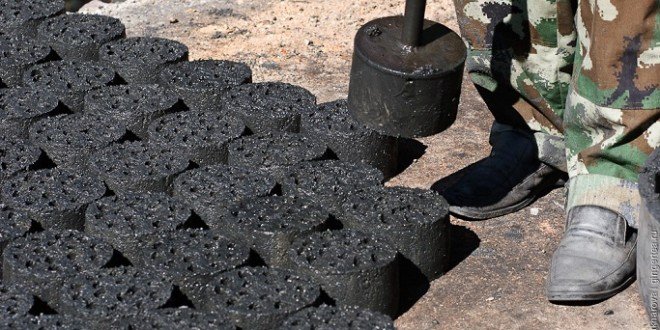 In order to make coal briquettes with your own hands, you need to have coal dust itself and clay, a safe binding element. By adding a little water, dust and clay are mixed 10: 1, thus, the solution acquires the desired consistency. It is very important to mix the substances thoroughly.
In order to make coal briquettes with your own hands, you need to have coal dust itself and clay, a safe binding element. By adding a little water, dust and clay are mixed 10: 1, thus, the solution acquires the desired consistency. It is very important to mix the substances thoroughly.
To create briquettes, you can use both a conventional construction mixer and special equipment, such as the Weber brand. If you decide to make briquettes by hand, you can use any containers, boxes, pans, etc. as a mold. At the end of production, fuel briquettes must be dried.
Note: the use of equipment for creating briquettes at home will be unprofitable.
Naturally, the briquettes made at home are not ideal. Their strength is not as great as that of industrial counterparts, they have different humidity and heat transfer.
But be that as it may, they burn perfectly in the boiler, much better than sintering and falling through coal dust. Yes, and the cost will certainly please them. The positive feedback left about this technology speaks for itself.
How coal briquettes are produced, see the following video:
